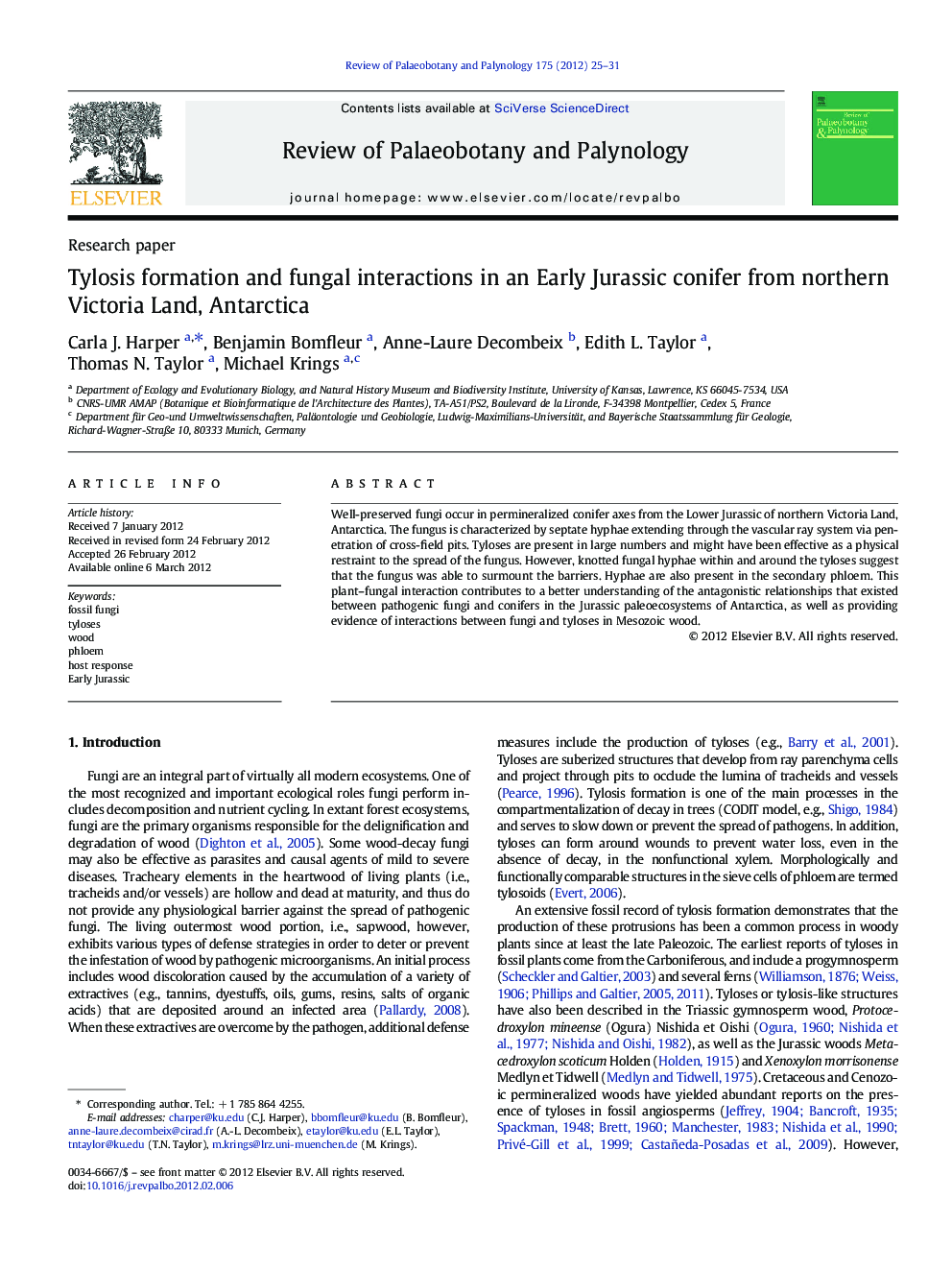| Article ID | Journal | Published Year | Pages | File Type |
|---|---|---|---|---|
| 4750502 | Review of Palaeobotany and Palynology | 2012 | 7 Pages |
Well-preserved fungi occur in permineralized conifer axes from the Lower Jurassic of northern Victoria Land, Antarctica. The fungus is characterized by septate hyphae extending through the vascular ray system via penetration of cross-field pits. Tyloses are present in large numbers and might have been effective as a physical restraint to the spread of the fungus. However, knotted fungal hyphae within and around the tyloses suggest that the fungus was able to surmount the barriers. Hyphae are also present in the secondary phloem. This plant–fungal interaction contributes to a better understanding of the antagonistic relationships that existed between pathogenic fungi and conifers in the Jurassic paleoecosystems of Antarctica, as well as providing evidence of interactions between fungi and tyloses in Mesozoic wood.
► A Jurassic conifer from Antarctica shows fungal infection of wood and phloem. ► The mycelium spreads horizontally via rays and vertically via tracheid cells. ► Fungal features are closely comparable to extant parasitic tree fungi. ► Tylosis formation is extensive and may represent a non-specific host response. ► First documentation of a plant–fungus interaction from the Jurassic of Antarctica.
